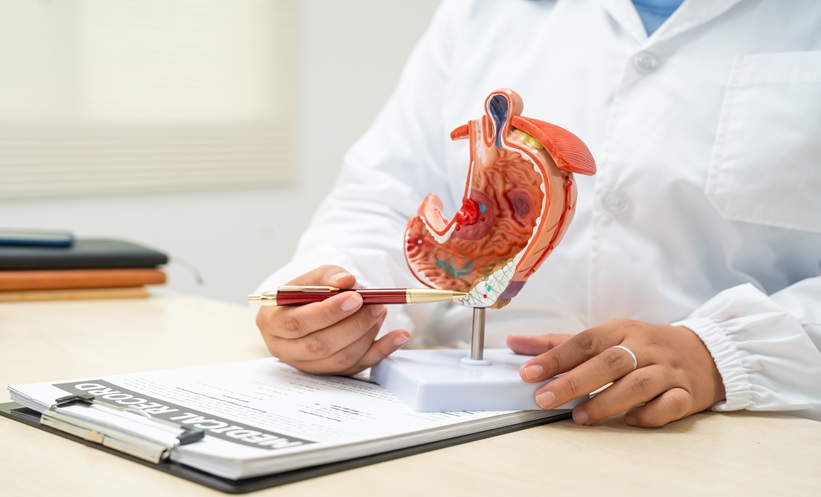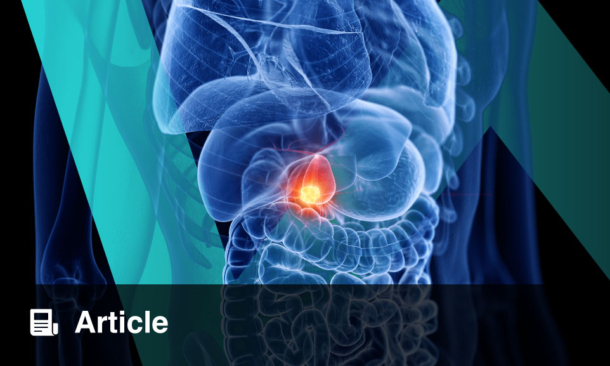Abstract
Roux-en-Y gastric bypass (RYGB) surgery is a very successful option for the management of obesity, and our understanding of how this intervention mediates sustained weight loss continues to grow. Controversy exists regarding whether bariatric surgical procedures such as RYGB may modulate food preferences of individuals, in particular, reducing appetitive and consummatory behaviour toward dietary fat. Herein, we summarise the evidence base regarding changes in food and macronutrient preference following RYGB surgery and discuss the challenges faced by investigators attempting to resolve whether this is a causal phenomenon in RYGB-induced weight loss and whether its development reflects a conditioned response.
INTRODUCTION
Roux-en-Y gastric bypass (RYGB) surgery is one of the most effective interventions for obesity management. This surgical procedure facilitates enhanced gut signalling by increasing the transit of food into the small bowel through the reduction in volume of the stomach (with a gastric pouch approximately 15–25 mL in size) and then anastomosing the jejunum to the newly formed pouch to facilitate ingested material rapidly entering into the mid-gut. An entero-entero anastomosis approximately 100–150 cm distally, creates the alimentary limb. This allows gastric contents and digestive enzymes to meet the diverted food at a point lower down in the gastrointestinal tract,1 which results in increased small bowel gut hormone concentration and neural signalling.2 The efficacy of RYGB surgery in weight loss is well established and has been demonstrated to maintain weight loss of up to 25% in adults 10–20 years after their surgery.3 Weight loss of this magnitude has proven elusive when using the best lifestyle and medical approaches available at present.4 Moreover, it has emerged as a valuable adjunct to medical therapy in the management of diabetes mellitus and potentially its complications.5-7 Our understanding of how redirecting the gastrointestinal tract can induce sustained weight loss is constantly evolving.8
Anecdotal experience that individual preference for particular foods and macronutrients may be altered following RYGB surgery highlights another potential mechanism of action in this weight-lowering therapy. Determining if RYGB surgery leads to healthier food choices and the mechanism through which this may occur is an important step in identifying non-surgical alternatives to RYGB. This review discusses the evidence of alterations in food preference.
FAT INTAKE AFTER ROUX-EN-Y GASTRIC BYPASS SURGERY
The earliest suggestions that a reduction in the constitutive percentage of fat in calories consumed came from prospective assessment of food diaries at intervals following RYGB surgery. Indicative of an absolute threshold of dietary fat tolerance, by 1-year post-surgery the percentage of calories derived from fat had plateaued, while those derived from other macronutrients increased in line with total calorie consumption.9 This is controversial, as 3-day recall of food intake at 6 months after RYGB surgery did not demonstrate any difference in preference for fat consumption compared to other macronutrients.10 However, in the immediate postoperative period, the focussed nutritional advice to consume less fat may serve as a confounder to the study of macronutrient ingestion. Looking beyond 2 years, but using studies based on self-reported food intake, there was also no change in the percentage of calories obtained from fat after RYGB surgery.11 However, another larger study in an RYGB cohort, again using self-reporting as the method of data collection, showed that at 36 months the fat contribution to total calories is significantly reduced compared with preoperative measurements.11,12
Using self-reporting in the immediate postoperative period, the contribution of fat to calorie intake does not appear to change significantly. However, as time from surgery passes and energy intake increases, a threshold for fat ingestion may be met, beyond which individuals do not consume additional fat. To better inform us on this subject, analysis of fat intake at a later period after surgery may help. Dietary questionnaires 6 years after RYGB surgery and gastroplasty identified a difference between the two groups in terms of their macronutrient consumption. Subjects that underwent RYGB surgery reported a significantly lower intake of calories from fat compared to their gastroplasty counterparts.13 The longest analysis extends to 8 years following RYGB surgery and benefited from being able to compare changes from preoperative levels of macronutrient ingestion.14 In this study, the estimated levels of fat consumption at 8 years were reduced from preoperative levels based on a 4-day food diary.14 The differing methodologies reported by these studies challenge our ability to draw conclusions from the data. Dietary recall is a subjective measure and can be prone to bias. There is a trend towards reports of reduced fat consumption following RYGB surgery and it appears that this is related to the time since surgery; equally however, there may be no effect and the trend simply represents a reporting bias, with patients trying to gratify the investigators by providing reports on data they believe are preferable.
PROTEIN AND CARBOHYDRATE INTAKE AFTER ROUX-EN-Y GASTRIC BYPASS SURGERY
In relation to protein intake, the data have been more conflicting. Bavaresco et al.15 reported no change in preference for protein among individuals followed-up at 12 and 36 months post-RYGB surgery.9,12,15 In contrast with these findings, both increases and decreases in protein consumption have been reported. Eight years following gastric bypass surgery, protein as a percentage of total calorie intake was reduced compared to the preoperative period.14 Prior to this, an increase in energy derived from protein was reported in patients 24 months after RYGB surgery.11 Of the studies reporting macronutrient intake, only Brolin et al.12 saw a change in carbohydrate intake following gastric bypass surgery that was significant from the baseline when followed for 36 months. The literature is also limited when it comes to differentiating between low and high glycaemic index carbohydrates. Increases in the rate at which the ingested nutrient is presented to the small intestine may drive high glycaemic index foods to have the propensity to cause early dumping syndrome. In turn the resultant symptomology may thereby promote patients to self-regulate simple sugar intake to attenuate the risk of symptoms.
PREFERENCE FOR SPECIFIC FOODS FOLLOWING ROUX-EN-Y GASTRIC BYPASS SURGERY
There is little consistency across the literature in relation to techniques used to measure preference, with no direct measures of behaviours ever being employed. We have addressed studies where specific reporting of macronutrient intake occurred; however, self-reported food frequency questionnaires have also been utilised to determine if changes in preference for specific food types manifest after surgery.
Using a 49-question protocol to determine differences between RYGB surgery and horizontal gastroplasty at 6 years following surgery, the RYGB group demonstrated decreased consumption of sausage, cheese, and desserts compared with vertical gastroplasty participants.13 More recently, a food preference questionnaire looking at both RYGB and vertical sleeve gastrectomy (VSG) operated groups evaluated their preference for specific food groups both preoperatively and 3 months postoperatively. The RYGB group demonstrated a significant reduction in preference for complex carbohydrates and high fat foods when compared to baseline. Interestingly, the VSG group reported an additional decreased preference for foods of a high sugar content and high protein content, something not reported in the RYGB cohort.16 Reduced consumption of calorie-dense high carbohydrate foods has been reproduced in larger cohorts of individuals following RYGB.17 Among 51 RYGB patients followed for 24 months post-surgery, consumption of specific calorie-dense foods was measured using 1-day dietary recall. The comparator group had undergone horizontal gastroplasty. Consumption of sweets, high calorie beverages, milk, ice cream, and high calorie liquids was reduced at 24 months postoperatively in the RYGB group.11 The latter was consistent with findings in a horizontal gastroplasty group but the other findings were isolated to the RYGB group. Trostler et al.18 reported specific reductions in starchy food 6 months post-RYGB and an increase in milk solids and eggs; however, the cohort in this study was small. Specific eating behaviour has also been assessed regarding eating behaviour, food craving, sweet taste, and fat preference questionnaires. Both RYGB surgery and gastric bands were associated with reduced craving for sweets and fast food as well as improved control over eating sweets.19
After RYGB surgery, consumption of certain foods is reported less frequently, in particular energy-dense carbohydrates and high fat foodstuffs. However, this does not infer that there is a change in the hedonic value of these foods and it may represent the effect of RYGB-induced satiety with a shift away from energy-dense foodstuffs. Additionally, reductions in high glycaemic index and high fat food intake after RYGB does not indicate reduced palatability per se, and preference may be based more on tolerability.
DIRECT APPROACH TO THE MEASUREMENT OF FOOD INTAKE AFTER ROUX-EN-Y GASTRIC BYPASS SURGERY (HUMANS)
The progressive ratio task (PRT) is a tool to measure appetitive behaviour. It allows the reward value of a particular food item to be evaluated, as it measures how hard a subject will work to receive a reinforcer. The PRT was used to study patients following RYGB surgery with a chocolate stimulus on one occasion and vegetable pieces on the other occasion. The outcome measured was the breakpoint, or the threshold of work at which the effort required was greater than the rewarding value of the reinforcer. The PRT was undertaken 2 weeks prior to surgery and 8 weeks postoperatively, in a fed state. The breakpoint for the low calorie sweet was significantly reduced postoperatively while there was no change in the breakpoint for the vegetable reinforcer. These results suggest that following RYGB the reward value of chocolate was halved, while the reward value for vegetables remained the same.20 Interestingly, the amount of work a patient after RYGB would carry out for chocolate still exceeded the effort they would make for vegetables.
When retested in 12 RYGB individuals and non-obese controls, the PRT was undertaken for chocolate in a randomised controlled crossover trial where individuals were given saline or octreotide in a blinded fashion. The administration of octreotide, a somatostatin receptor agonist, was associated with a significant increase in PRT breakpoint for the sweet reinforcer. The same was not seen in the non-obese controls. Octreotide suppresses the anticipated postprandial increases in the enteroendocrine satiety hormones glucagon-like peptide-1 and peptide YY seen following RYGB surgery. Administering octreotide prior to functional magnetic resonance imaging (fMRI) was associated with an increase in blood oxygen level-dependent (BOLD) signal in functional regions of interest in reward pathways, suggesting that gut hormones following bariatric surgery may have a role in mediating changes in reward signalling post-RYGB surgery.21
DIRECT APPROACH TO THE MEASUREMENT OF FOOD INTAKE AFTER ROUX-EN-Y GASTRIC BYPASS SURGERY (ANIMALS)
To overcome the challenges faced in determining food preferences following RYGB, an objective measurement is required which carefully quantifies food ingestion. An alternative method is to use animal models, as the direct consumption of food may be monitored in animals more readily than in humans.
The PRT was undertaken in a group of sham or RYGB rats for the palatable reinforcers. Ensure, sucrose, and intralipid showed no difference in the breakpoint between groups.22 However, we have seen conflicting results in animals. Shin et al.23 explored changes in hedonics following RYBG surgery in a rat model analysing orofacial expressions at varying concentration of sucrose; the rats exhibited positive expressions at lower doses compared to higher doses. The incentive runway test was used to evaluate wanting; obese rodents demonstrated a shortened runway time indicating an increased wanting for a reinforcer, however this was reversed by RYGB surgery.23 Animals are unencumbered by the social pressure patients face to eat the right food or less ‘bad food’, which may explain the differences between human and animal studies, although the biological changes that are instigated by RYGB surgery may also make it easier for patients to adhere to the ‘correct behaviours’.
Using rodents, Saeidi et al.24 showed a significant decrease in mean consumption of high fat chow-derived calories in rats treated with RYGB surgery compared with VSG rats, recorded as 59% and 84%, respectively. Conducting repeated exposures to a high fat diet after surgical intervention also demonstrated that RYGB-operated animals had a progressive decline in fat consumption.24 The effect was more striking when RYGB-operated animals were directly compared to sham-operated animals, where the sham group continued to consume the majority of their calories in the form of high fat (45%) chow after surgery. However, RYGB animals again showed a progressive reduction in calories consumed from high fat chow and a compensatory increase in intake of low fat chow.25 Both fat and sugar preference were assessed using a 2-bottle preference test of liquid fat and sugar preference following RYGB surgery. Rodents undergoing sham or RYGB surgery were exposed to water or intralipid and water, offering high sugar and fat alternatives to the calorie-free water. Animals that had undergone RYGB surgery demonstrated a decreased preference for these high calorie options when compared to shams.22
Utilising a comprehensive cafeteria diet in a rodent model, Mathes et al.26 showed that obese rats that undergo gastric bypass surgery demonstrate a change in their preference for specific macronutrients. The buffet style cafeteria diet contained high fat, high sugar, high fat and sugar, and high protein foods. Following repeat exposure to the cafeteria diet the consumption of fat was similar to the sham-operated group of animals. However fat intake decreased over repeated exposure in the RYGB-operated group compared with the sham controls. These findings suggest that the animals acquire a pattern of fat avoidance following RYGB as they do not stop eating fat completely, but continue to consume fat at a significant, albeit lower, level.26
This pattern of behaviour may be best referred to as avoidance, as the authors believe the findings are not consistent with aversion; the former implies that the animals still find the food palatable i.e. they like the food but they do not want it. Aversion on the other hand reflects reduced palatability of the food; they neither like the food nor want it.27 The authors also reported that protein and sugar consumption were not significantly different between the groups, although the ingestion of complex carbohydrates did increase. Interestingly the pattern of behavioural change toward fat may reflect a conditioned response learned through repeated exposure to fat, whereby conditioning refers to the pairing of fat ingestion with a negative stimulus, perhaps arising from the gastrointestinal tract.
The study of food preference in an animal model has provided insight into behaviour toward fat consumption following RYGB. We observed a consistent reduction in the amount of fat eaten following RYGB surgery when compared with control rats. However, what is striking is that the animal continues to consume a significant percentage of their calories from fat, implying that they continue to ‘like’ fat, raising the question of whether there is any specific effect of bariatric surgery on the hedonic rating of food.
HEDONIC RATING OF FOOD AFTER ROUX-EN-Y GASTRIC BYPASS SURGERY
Having addressed a body of evidence looking at the possible impact of RYGB surgery on the consumption of macronutrients and specific foodstuffs it is appropriate to consider the influence of RYGB on the hedonic value of food as alterations therein could underlie shifts in macronutrient preference after surgery. When we consider hedonics, we are discussing the rewarding properties of food. Essential to the processing of food reward are two individual factors: ‘appetitive behaviour’ and ‘consumatory behaviour’. Appetitive behaviour refers to the motivational value of a reinforcer that is triggered by a conditioned cue, and measures how hard a subject will work for the reinforcer. Consumatory behaviour refers to the pleasure attributed to a specific food reward and is measured by the positive or negative behaviours observed when the tastant contacts the taste receptors in the mouth. These distinct components of reward processing appear to be mediated through differing neural pathways and neurotransmitters.28
SELF-REPORT
Appetitive and consumatory behaviour cannot accurately be measured with self-report and hence the terms ‘wanting’ and ‘liking’, respectively, have been postulated as surrogates. The power of food scale (PFS) consists of a 15-item questionnaire that addresses three domains based on an individual’s proximity to food and has demonstrated retest reliability.29 Schultes et al.30 utilised a PFS to address wanting and liking. Three observed groups, severely obese, non-obese controls, and gastric bypass groups, were all given the PFS. The severely obese cohort demonstrated higher scores on the PFS compared to the non-obese control group, suggesting that their hedonic drive for food was increased compared with their non-obese counterparts. However, there was no difference between these groups in the domains of taste. Interestingly, subjects who were tested after gastric bypass surgery demonstrated aggregated scores (all three domains of proximity) that were significantly lower than the obese cohort and similar to the non-obese.30 Ullrich et al.31 conducted a similar experiment using PFS questionnaires but replaced the gastric bypass group with a gastric band group. The findings were remarkable; while scores for patients with gastric bands were lower in all domains compared to the severely obese groups, they remained significantly higher than the non-obese controls in the domain of food availability. This was in contrast with the gastric bypass which appeared to ‘normalise’ this parameter.31 The increased hedonic drive toward palatable food items that is present in obese individuals is reduced by bariatric interventions, and to the greatest extent by RYGB surgery.
MEASURES OF NEURONAL ACTIVITY
The use of fMRI in adults who have undergone RYGB surgery offers additional insight into the postoperative changes in the hedonic value of food. Specifically looking at areas that are believed to house neural reward pathways, fMRI has been used to evaluate responses in the mesolimbic system to food cues. Participants were evaluated prior to surgery and 1-month postoperatively. Visual and auditory cues presented highly energy-dense and low energy-dense foods to the participants. Post-RYGB surgery, there was a reduction in fMRI neural activity in the mesolimbic pathway in response to highly energy-dense stimuli. These reductions were more pronounced than those recorded in response to foods of lower energy density.32 The same group went further to evaluate the relationship between changes in activity of reward-activated neurons and changes in the reported hedonic value of food. In a similar study design, researchers conducted pre and postoperative fMRI following gastric bypass surgery. In addition to brain imaging, participants rated their desire to eat the food items as well as their liking of the individual cues. Prior to surgery, desire (wanting) and liking for the foods correlated closely. Post-RYGB surgery, the desire to eat highly energy-dense foods was reduced significantly; despite this, there was no significant change in the individuals’ liking for these foodstuffs. The study also reconfirmed the findings of reduced neural response to high calorie food cues post-RYGB surgery.33 These findings add to our understanding that RYGB is associated with a reduction of activity in areas of the central nervous system that are implicated in the processing of reward stimuli, hinting that it is the hedonic wanting of energy-dense foods rather than the liking of them that is altered postoperatively.
Normal controls were compared with RYGB and VSG patients 6 months after surgery using MRI, specifically focussing on BOLD signalling in the ventral tegmental area, nucleus accumbens, orbitofrontal cortex, anterior cingulate cortex, amygdala, and thalamus. Participants were evaluated on their response to visual cues of high and low calorie foods. In the ventral tegmental area there was a reduction in BOLD signal at 6 months in the RYGB cohort in response to high calorie food cues compared to baseline. While a reduction in BOLD signal was seen in the VSG cohort compared to the controls, this was not significant compared to baseline.34 There was comparable weight loss between the surgical groups.
Dopaminergic pathways appear important in hedonic neurotransmission.28 The proposed changes in the hedonic value of particular foods following surgery raise the question of whether alterations in dopaminergic signalling are implicit in the process. Positron emission tomography (PET) with a D2 receptor agonist radioligand was undertaken in a small cohort of females post-RYGB surgery and VSG. The pattern of reduced D2 receptor availability supported the hypothesis of decreased dopaminergic neurotransmission following these bariatric surgical interventions.35 A smaller study looking at RYGB patients revealed that D2 receptor availability on PET imaging in the central nervous system increased by 6 weeks following surgery, although this study was conducted in only five female subjects.36 These conflicting findings require larger studies in a more heterogeneous cohort to clarify the picture regarding dopaminergic activity following bariatric surgery.
RESOLVING THE CONTROVERSIES
Most of the controversies relate to challenges in the methodology. The use of dietary recall and questionnaires has been shown to be associated with underestimation of energy intake and patients trying to please the investigator by being perceived to give the right responses.37 In addition, there may be errors in macronutrient reporting, favouring high protein and low fat; this may reflect the efforts by participants not to admit to the consumption of unhealthy food choices.38 Particularly in obese populations, there has been a tendency to report a lower energy intake.39
Doubly labelled water studies that assessed energy expenditure in conjunction with food and physical activity diaries demonstrated inaccuracies with the reporting of calorie intake in food diaries.40 Reporting inaccuracies have two implications in the evaluation of macronutrient preference: i) the under-reporting of fat consumption at follow-up post-RYGB surgery leads to a false positive assertion that fat intake is reduced; ii) conversely, that the under-reporting of fat intake preoperatively leads to a series of false negative findings that fat intake does not change after RYGB surgery. If this method is inaccurate, the question is raised of how we overcome these methodological challenges to accurately record and quantify macronutrient intake. The evidence for an altered preference for fat following RYGB is much more convincing in animal models as it has allowed for objectivity in the measurement as outlined above. These findings are supported by the more consistent finding that RYGB surgery is associated with a lowering of the hedonic value of palatable energy-dense foods.
The next piece of the puzzle that needs to be put in place is the prospective determination of macronutrient intake using an objective measurement. Directly measured ad libitum food intake has been successfully used to quantify caloric intake in the past41 and may hold the key to finally addressing the question of whether RYGB surgery changes macronutrient choices in humans. The meticulous prospective measurement of macronutrient intake before and after bariatric surgery using a cafeteria style diet would significantly contribute to our knowledge on this topic. Determining the presence of altered food preference following bariatric surgery has important clinical implications. If what we are observing is a conditioned response to a fat stimulus, then the dietary management of individuals who undergo bariatric surgery may need to be revisited to enhance learning. Of course, a detailed understanding of the mechanisms underpinning a decreased preference for high-energy foods may ultimately yield a novel therapeutic target in the management of obesity.








